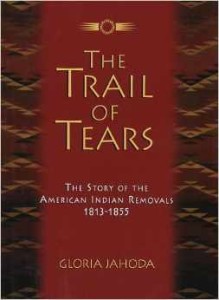This is an unrelenting narrative, tightly written and carefully researched of one of the lowest points in the moral history of a country whose national narrative is full of moral low points. It chronicles a trail of sanctioned deception, dishonesty, criminal intent, dissembling, duplicity and willful genocide, as morally reprehensible as anything ever seen in the history of a self-conscious nation.
The reader simply becomes a mesmerized spectator to crimes that (to paraphrase Frederick Douglass' famous words) would “disgrace a nation of savages.” Crimes all waged under the American flag (the supposed banner of equality and freedom), by U.S. governmental officials like President Andrew Jackson, who was the architect and operational officer of the removal proceedings.
Whenever the legal system could not be rigged to allow the process to proceed, it was then ignored and the crimes proceeded anyway, against the government's own treaty obligations and against a helpless people completely out of options.
For a nation claiming to be religious, the “trail of tears” surely shamed the white god as much as it did the fledgling nation. Against the most basic of biblical teaching, the “enforced death march,” was waged against a people willing to accept anything short of cultural genocide. However, cultural genocide was exactly what the white American nation demanded and wanted, and acting at its behest, that was exactly the price President Andrew Jackson delivered.
Ironically, the “forced death march” was similar to one carried out one hundred years later in WW-II in the jungles of Burma, against Allied forces, called the Battan death march,” where allied prisoners of war were forced to march through the jungles of Burma to their death. The “Battan Death March” today stands to Americans as one of the worst symbols of atrocities in war. Yet, “the trail of tears” was waged in peace and waged as vigorously against those Indians who had capitulated and accepted “the white man's way,” as it was against those who stood implacably against the white man's attempt to overrun the continent.
The list of villains provided here is as dark, long and consequential as the list of heroes is bright, short and coincidental. The latter included Sam Huston and Davy Crockett, and the French Priest Benjamin Petit. The first two would reappear again in American history again as moral heroes against the evil forces of their own government, but each this time in very different contexts. However, in this book their efforts stand quietly isolated in stark relief as the penultimate act in the closing chapter of a sordid history of white American genocide against Native Americans, that would end at “Wounded Knee.”





